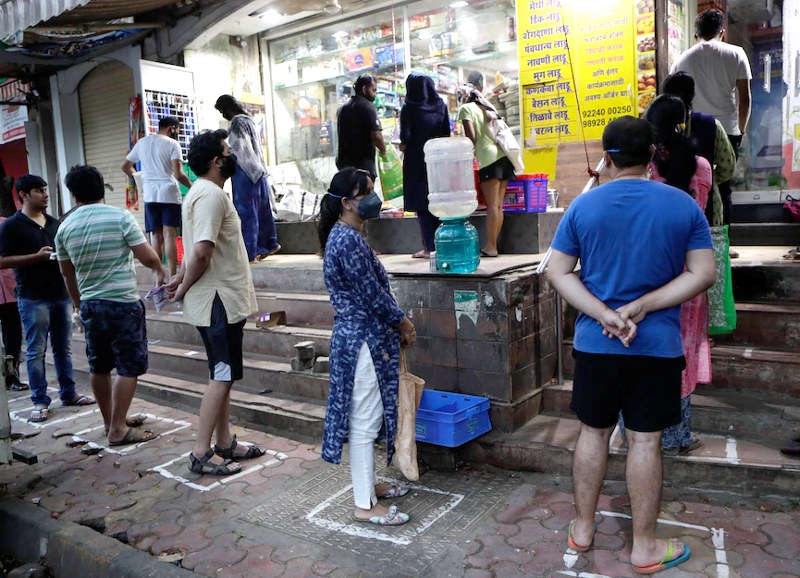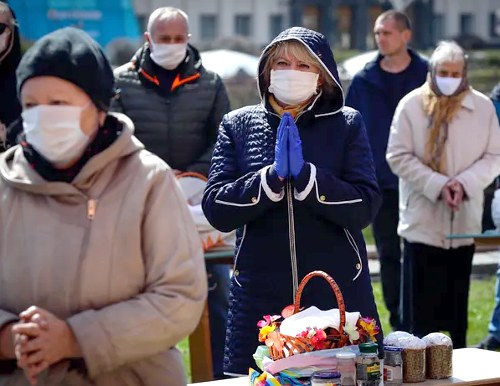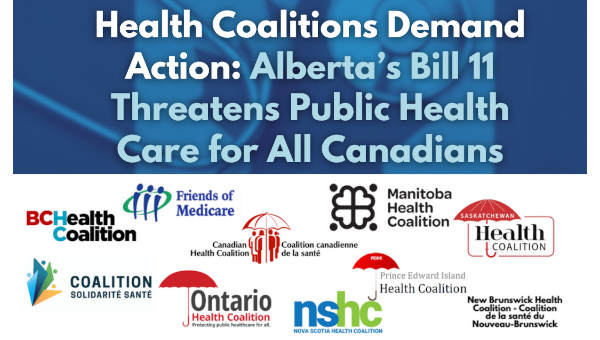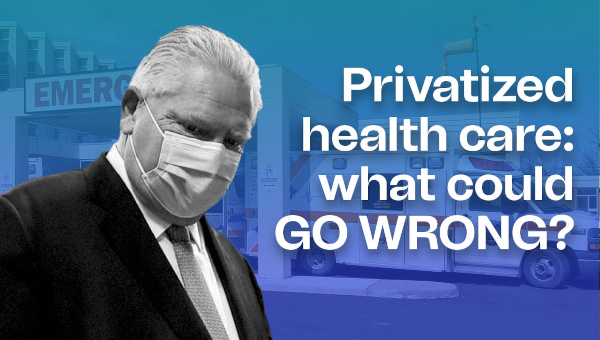The Pandemic Kills the Poor: Inequality Will Kill Them Even More
In just over four months, COVID-19 has become the fastest-growing known global health crisis to date. Various systemic biological, political and public health factors have converged to make this happen: the contagiousness and the high mortality rate of the virus, the neoliberal weakening of national and global public health systems, the globalization of air-transport tourism, and institutional and political unwillingness to listen and react appropriately to the warnings raised by scientists and health institutions such as the World Health Organization (WHO) are some of them. Although no one could predict exactly when, how and where it would start, or who would be most affected, we have known that something like this could happen since at least the 1980s.1

Scientists warned that global socio-ecological changes, which allow infectious diseases to emerge, were increasing at an unprecedented rate, or that, in the words of Nobel Prize-laureate microbiologist Joshua Lederberg, “the greatest threat to the continued dominance of man on the planet is the virus.” Yes, we were repeatedly warned. In 2015, Bill Gates noted in an outreach video and scientific publication: “There is a high probability that an epidemic of a highly infectious disease will occur in the next 20 years.” And in September 2019, the WHO itself warned: “The world is at serious risk of devastating epidemics or pandemics of regional or global diseases that not only cause loss of life but also destroy economies and create social chaos.” However, the coronavirus is not a global pandemic that affects the entire population equally, as is often repeated, but is further exacerbating the huge social inequalities that already existed.
In times of a pandemic, one of the best ways to assess the achievements versus the social injustices of a country or community is to analyze in detail its health conditions, and especially, the health system’s (and thus also the economic system’s) level of equity. Contrary to the very positive assessments of society’s ‘progress’ by authors such as Steven Pinker, Max Roser, Matt Ridley, Johan Norberg or Hans Rosling,2 which flood us with optimistic indicators of today’s society and serve to justify the benefits of the capitalist system, poverty, social exclusion and inequality, globally and also within countries, are much greater than we imagine or want to see.
The way we see things is affected by what we know or what we believe. Looking is an act of choosing, said British writer and art critic John Berger, adding: “we only see what we look at.”3 In the novel Blindness, a strange virus suddenly produces mass blindness in the population. In this novel, the Portuguese Nobel Prize laureate José Saramago teaches us that “we are blind, blind who see, blind who, seeing, do not see.”4 We do not yet have adequate analyses to be able to assess the comprehensive impact of the pandemic in a minimally refined way, but the preliminary results indicate many of the effects that are taking place, and also the consequences that are highly likely to occur in the immediate future. What lessons can we learn from the social impacts of a tiny betacoronavirus just 100 nanometers in diameter?
Lessons
The first lesson we must learn is about ignorance, or amnesia. A century ago, an article in the journal Science noted: “The pandemic that has just spread across the earth is unprecedented. There have been more deadly epidemics, but they have been more circumscribed; there have been almost as widespread epidemics, but they have been less deadly…”5 The 1918-19 pandemic killed 50 to 100 million people over three waves. Although for decades it was argued that the pandemic affected all social groups equally, recent studies have shown how population mortality varied more than 30 times among different countries, with the vast majority of deaths occurring in poor countries.6 They also show how the mortality of the popular social classes was higher, observing that, despite the virulent nature of the virus, “the flu did not behave in a democratic way… but there was significant geographic variation in the mortality, associated with sociodemographic factors.”7
Almost a century later, during the 2009 H1N1 influenza pandemic, the death rate in England was found to be three times higher in the poorest fifth of the population than in the wealthiest,8 and the rates of mortality and hospitalization among Hispanics and black people in Illinois in the United States were much higher than among the white population.9 Recently (April 15, 2020), official data tells us that the current COVID-19 pandemic has infected more than two million people, of whom nearly 130,000 have died. The global impact of this multidimensional crisis that has turned the planetary economy, society and politics upside down is immense.
There is no doubt that the world has changed, and nothing will be the same as it was before. But when we assess the severity of the virus’s mortality rate, we can see reality from a more nuanced perspective. The 2009 A (H1N1) influenza pandemic spread to one billion people, of whom perhaps half a million people died; annually between 250 and 500 thousand people die in the world from the common flu; in the four and a half months of the crisis, nearly 3 million infants have already died of hunger, in absolute obscurity. In the developed world, the pandemic has developed into a tragic and collapsing situation, but a large part of the world population already lives day-to-day in this collapse, and the coronavirus will further exacerbate a planet already sick with inequality.
A second lesson to learn has to do with the causes, or the ‘why’ of the pandemic. The cause of the pandemic is not just biological; it is not just a virus. For example, people got sick and died from the SARS-Cov-2 virus according to factors such as their biomedical constitution and age, but these are not the “only causes” of getting sick and dying. Public health studies teach that collective health and disease processes are also socially and historically determined. In fact, from before birth until death, we incorporate political and socio-ecological determinants into our bodies and minds, which we later express in the form of health or disease.10
Causes of the Pandemic?
What, then, are the causes of the pandemic? As the sociologist Zygmunt Bauman warned, now more than ever we depend on each other, and for the first time in history, we can say that we are one humanity. We are interconnected. Anything that happens in one part of the globe has effects on the rest of the planet, although in many cases, we will not know how, when, or what those effects will be. The root causes of the pandemic lie in the systemic eco-social crisis in which humanity finds itself: excessive urbanization, changes in land use, deforestation, loss of biodiversity, massive growth of agro-industry, transmission of diseases among overcrowded animal species, massive growth in tourism and air travel.
And what’s behind it all? A systemic process of accumulation, exponential growth and inequality, inherent to an unbridled economic system, that is, capitalism, which, as many scientific studies show, crashes against the planetary biophysical limits. It is not just that there is an eco-social or climatic crisis, but there is a political-economic project that generates the conditions for these crises to occur. What lies behind the phenomena we are experiencing is an economy that makes us sick when it grows and that also makes us sick when we go into crisis.
“Is capitalism a disease?” asked the great mathematician and health ecologist Richard Levins a few years ago. Many scientists like him have been warning us of the arrival of a pandemic for years but, as Noam Chomsky has claimed with his usual lucidity, “the prevention of a catastrophe does not produce benefits.” Without very profound political, socio-ecological and economic changes, the likelihood is very high that this will not be the last pandemic we experience, or even the most lethal one that will appear.
COVID-19 meets all the conditions for us to consider it a pandemic of inequality. Although precise scientific analysis will not be available for a few months, there is little doubt that the pandemic constitutes a serious threat to the working population and popular neighborhoods of cities such as New York or Chicago, where African Americans account for seven out of ten deaths, although they constitute only 30 per cent of the population. But the pandemic will have an even stronger impact in those countries that the Uruguayan writer Eduardo Galeano described as “countries overwhelmed by the development of others.” And, unfortunately, the world is full of destitute suburbs, overcrowded homes, precarious and informal work, weak health systems, and a lack of food and clean water. For the 2.5 billion people who survive on just $5 a day, the impact of COVID-19 can be dire. In our society, it is endlessly repeated that it is essential to wash our hands frequently to prevent infections. But UNICEF notes that one in three people in the world do not have access to clean water and that more than 300 million Africans do not have running water. The pandemic is devastating the world’s poor, even before the coronavirus has fully affected them.
Main Pandemic: Inequality
So far, the majority of the official number of global deaths from the pandemic have been recorded in rich countries, but that could quickly begin to change as the virus spreads and if we can gather the appropriate data and analysis to know the number of those infected in the poorest countries. Already, in recent weeks, we have seen the first confirmed cases of COVID-19 in some of the world’s largest and most overcrowded slums. A study in Brazil, for example, has estimated that the actual number of coronavirus cases in the country could be 12 times the official number. But even if the coronavirus itself does not spread in thousands of cities and towns in Africa, Latin America and Asia (where effective social distancing can be impossible), for millions of people in these continents, an extremely precarious livelihood and informal work, high poverty levels and a likely enormous loss of jobs can kill more than the coronavirus can. All this could produce widespread social chaos, with hundreds of thousands of desperate people and an increase in the already huge number of migrants in the world who are looking for a way to survive. When, in the near future, we have reliable data and analysis, we will be able to assess the real effects of the pandemic in terms of morbidity and mortality, and it will be possible to compare its impacts among countries and among social groups, but today we can say that health inequalities are the great disease of our time, our main pandemic.
At the beginning of the century, the Spanish writer Manuel Vázquez Montalbán analyzed the emergence of pan-capitalism in an essay on globalization, warning us that showing the anthill, the skin, the eyes of the losers was subversion, and that someday soon it could be prohibited. Fortunately, we have not reached that point, but the current absence of reliable data that exists in many countries for analyzing inequality seems to bring us closer to it. A large number of scientific analyses have shown how the most vulnerable classes, women, migrants, infants, the elderly and the poor become ill and die more frequently due to unjust but avoidable conditions. The COVID-19 pandemic will amplify previous social inequalities. It will not simply maintain but will exacerbate the pre-existing social rifts, and its impacts will not be felt equally by all.

Neoliberal commodification policies have mercilessly degraded public health resources and services; social service supports were never developed; and public health (i.e., the means of analyzing, protecting and preventing disease and promoting collective health) has been systematically underfunded and ignored. Professionals, hypocritically hailed by some as heroes, have had to unnecessarily expose themselves to contagion and the risk of dying. For weeks, large numbers of precarious workers have had to choose between risks: going to work, losing their job, or, alternatively, precariously confining themselves without having the privilege of teleworking. Along with construction workers, delivery workers and employees in the tourism and service sectors, a large part of the working class that supports the daily life of the entire population has been made invisible. In the home, the crisis manifests itself especially for women who care for sick and disabled people, infants and the elderly. Cashiers, cleaners, housekeepers, care-givers and social workers also have a woman’s face.11
French microbiologist and environmentalist René Dubos has said that each civilization creates its own diseases and epidemics. The most important disease of our time, our most devastating pandemic, is not tuberculosis, malaria, AIDS or COVID-19. Rather, it is inequality. According to historian Peter Turchin, there is a strong association between social crises, globalization and pandemics, such that pandemics have been more likely at times of greatest social inequality. The poor population emigrates at higher rates to find work, and the wealthy spend more on luxuries and they travel more to faraway places. The world is more closely connected through people, germs and items traveling along trade routes, connecting cities and countries. This happened in the 2nd century A.D., when the Roman and Chinese empires were at the peak of their wealth and power; during the plague of Justinian in the 6th century; and during the Black Death in the 14th century.
Similarly to what happened with the 1918 flu, this 2020 pandemic is the spark that has lit a latent crisis in a hugely unequal global economy. It is a crisis which will further amplify existing inequalities by transforming into mere rhetoric the frequently-repeated expressions such as no one gets left behind, and no one will be abandoned to their fate.
The Spanish philosopher Emilio Lledó recently pointed out that we should not let anyone take advantage of a virus in order to keep us in the dark and imarginalized. The coronavirus pandemic is killing the poorest due to inequality. In turn, the poverty and inequality created by the economic crisis will kill even more. The coronavirus forces us to create radical social change. •
Originally published in Spanish at Contexto y Acción.
Endnotes
- S. Knobler, A. Mahmoud, S. Lemon S, et al. (eds.), Learning from SARS: Preparing for the Next Disease Outbreak. Washington (DC): National Academies Press, 2004.
- For example: Steven Pinker, Enlightenment now. The case for Reason, Science, Humanism, and Progress. Allen Lane, 2018; Max Roser, “The short history of global living conditions and why it matters that we know it,” ourworldindata.org, 2017.
- J. Berger. Ways of seeing. Penguin Books, 1972.
- José Saramago. Blindness, Mariner Books, 1995.
- GA Soper. “The lessons of the pandemic,” Science vol 49(1274), May 1919.
- CJ Murray, et al. “Estimation of potential global pandemic influenza mortality on the basis of vital registry data from the 1918–20 pandemic: a quantitative analysis,” The Lancet, 2007.
- S-E Mamelund. “A socially neutral disease? Individual social class, household wealth and mortality from Spanish influenza in two socially contrasting parishes in Kristiania 1918–19,” Social Science and Medicine, 2006.
- PD Rutter, et al. “Socio-economic disparities in mortality due to pandemic influenza in England,” International Journal of Public Health, 57(4), 2012.
- K Soyemi, et al. “Disparities among 2009 Pandemic Influenza A (H1N1) Hospital Admissions…,” PLOS One. 28 April 2014.
- J Benach, JM Pericàs, E Martínez-Herrera. “La salud bajo el capitalismo. Contradicciones sistémicas que permean la ecohumanidad y dañan nuestra mentecuerpo,” Papeles de relaciones ecosociales y cambio global. 2017(137):29-56.
- Joan Benach. “La pandemia, detonante y espejo de la crisis de salud pública,” Contexto y Acción, 20 March 2020.





